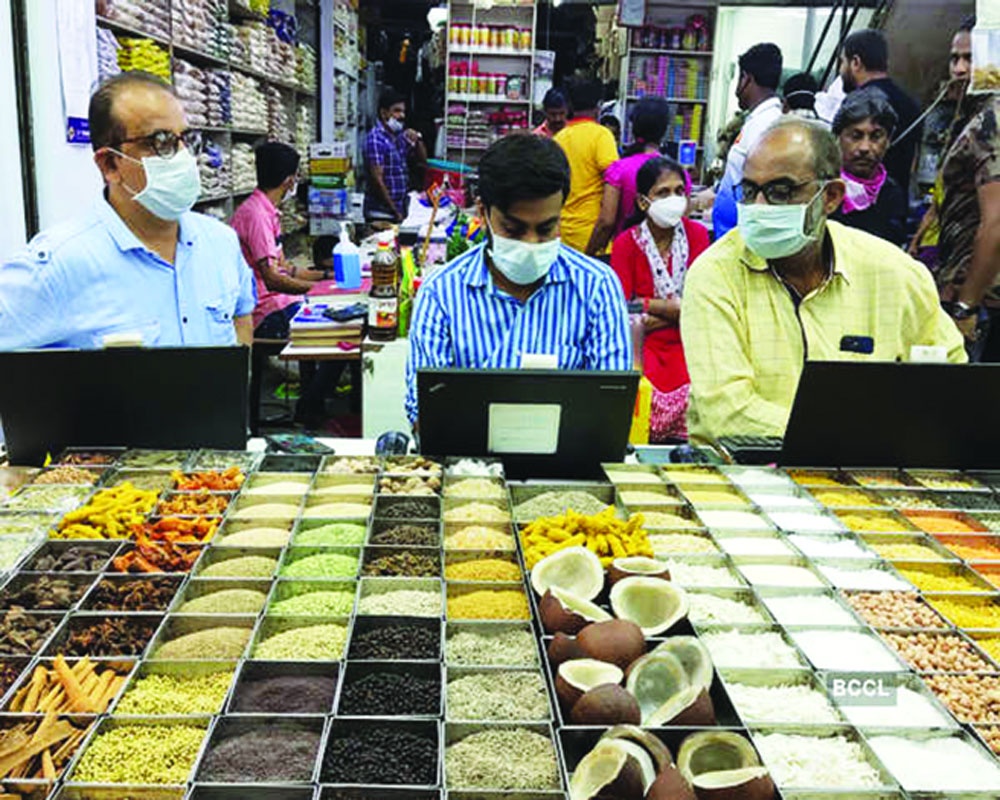While we have enough stocks, the supply chain breakdowns and curfew protocols to choke the virus point to a crisis
The country may have sufficient foodgrain stocks in Central and State warehouses as reserves to tide out an emergency but the breakage of supply chain management due to the lockdown has also meant that they are not reaching beneficiaries. The Government claims that we have nearly 10 times the emergency reserve needed for this time of the year and the fair price shops can go on an overdrive to meet our nutritional requirements. But these are just dry rations, such as rice, wheat, sugar and pulses. Farm supplies have been badly hit because of sudden closure. Even if there are vegetables waiting to be loaded, varying curfew protocols by different States and the still patchy system of curfew passes for truckers mean that there is no movement. Police harassment has only complicated transit. States like Karnataka, Kerala, Telangana, Delhi, Maharashtra and West Bengal have issued curfew passes promptly and set up police task forces to facilitate smooth movement. But virus hotspot States like Punjab, Madhya Pradesh, Gujarat and Rajasthan have totally closed their borders and even sealed their drop point depots. Although the Government is contemplating a staggered release from lockdown, mainly to ensure the April harvest from the fields, the exodus of daily labourers has meant that there are far fewer hands available to manage field work. There are also reports of truck drivers joining the migrants. The second biggest bottleneck is of manufactured, processed and packaged food items. With consumers hoarding anything with a shelf life, the sudden gush of demand, the flight of labour at units rolling them out and the supply chain gaps have meant that our breakfast platters are beginning to look different. Fast-moving consumer good (FMCG) companies are already registering an upswing in demand from urban centres, indicating the hoarding spiral. The retail network has completely collapsed, its earnings now down to 15 per cent. A longer lockdown would mean that sector players would have to shut down and let go off their staff by June. It is, of course, the neighbourhood stores and grocers, who are back in business, having just enough capacity to serve their ecosystem and, therefore, able to smoothen some shocks given their scale. The online delivery platforms have already collapsed with the supply chain breakdown, running out of stocks, delaying deliveries and some of them not signing up new customers at all. The less said about the poultry sector the better; eggs are still available though chicken and meat are mostly off the shelves because of the zoonotic virus. Even dairy products could be affected as a report said that the Aarey dairy has just enough fodder for the cattle to last a week or so.
In the end, what is needed is enabling bulk supplies and that, too, at a time of isolation protocols that demand there is no over-crowding at procurement sites. Most agricultural produce market committees, where every business sources supplies, have been shut for a while. Some of them have negotiated limited trading hours to minimise numbers. Respecting protocol and enforcing it with precision is a big challenge as is the enormous time lag. Besides, it is the high heat of summer and perishables, without fast movement, run the real risk of being wasted. At least for a month or so, a risk-free procurement will have to be evolved in consultation with Central and State representatives. If the situation prolongs, then the Government may have to look for other alternatives. For example, the Food Corporation of India has both operational and food security stocks. At a stretch, the Centre can offer them to States and then perhaps to select retail chains should the market so demand. Wheat and rice godowns are already overflowing but the holding capacity of fair price shops will have to be ramped up. Of course, we will also have to deal with the possibility of reduced food imports what with export restrictions in place. And while we might be able to ensure emergency food needs of vulnerable populations, pricing interventions just might be required. As for civil society, it can be incentivised to donate to food banks, the amount exempted from taxes, for the vast numbers of homeless and jobless. Saving lives is not just about treating the infected but nurturing a whole nation back to life from a calamitous disruption that had neither been foreseen nor imagined. Call it social welfarism but innovation and enterprise can only come when a nation is well-fed.
(Courtesy: The Pioneer)








 OpinionExpress.In
OpinionExpress.In















Comments (0)